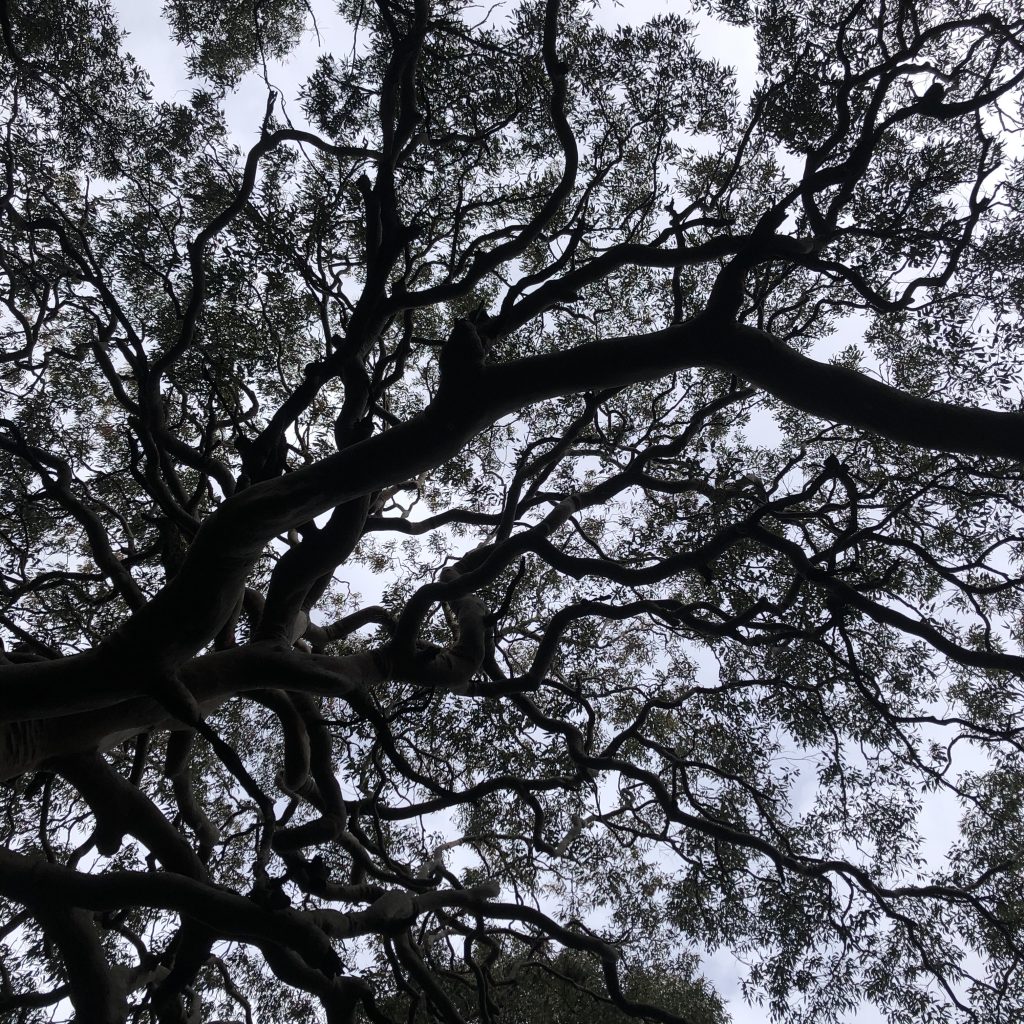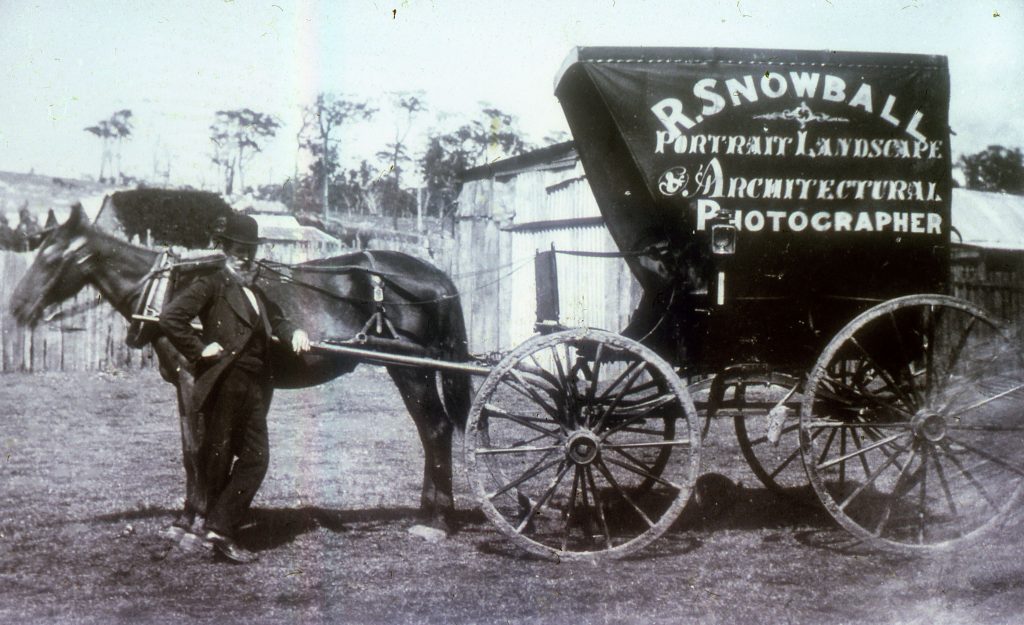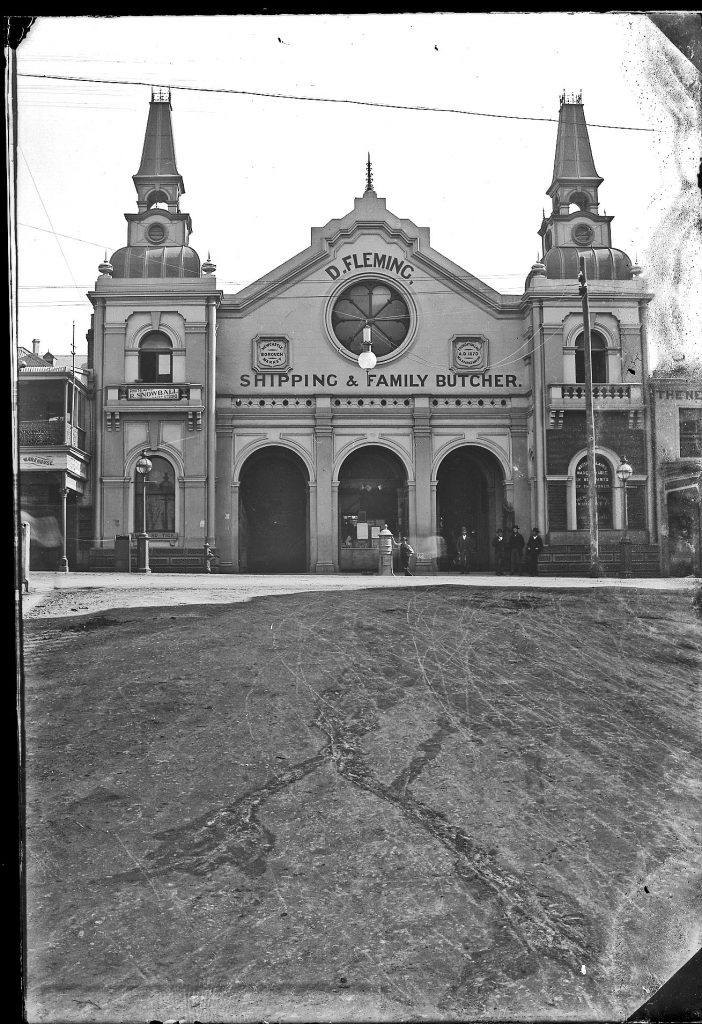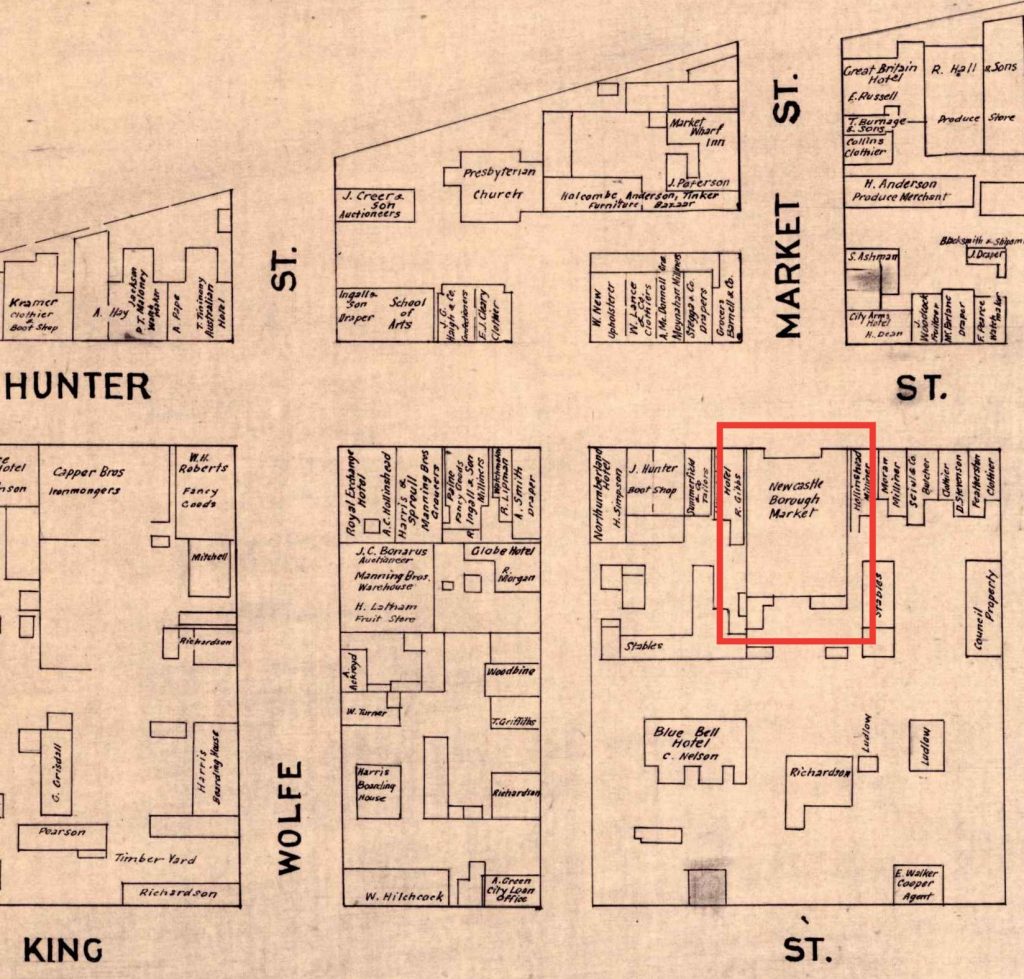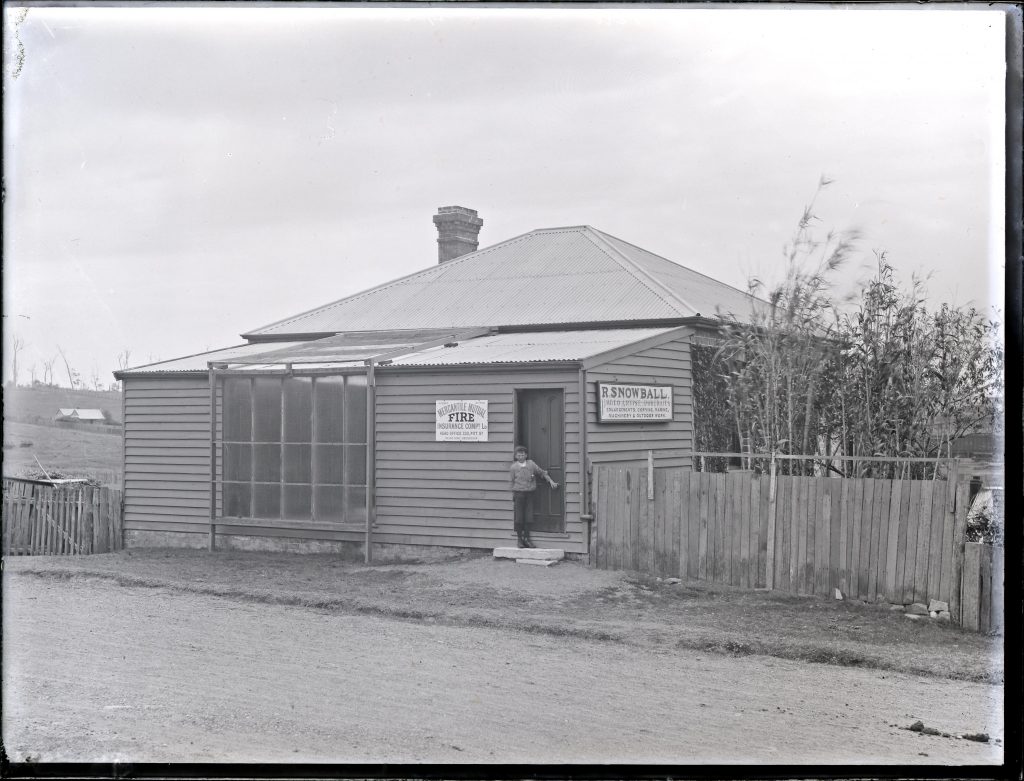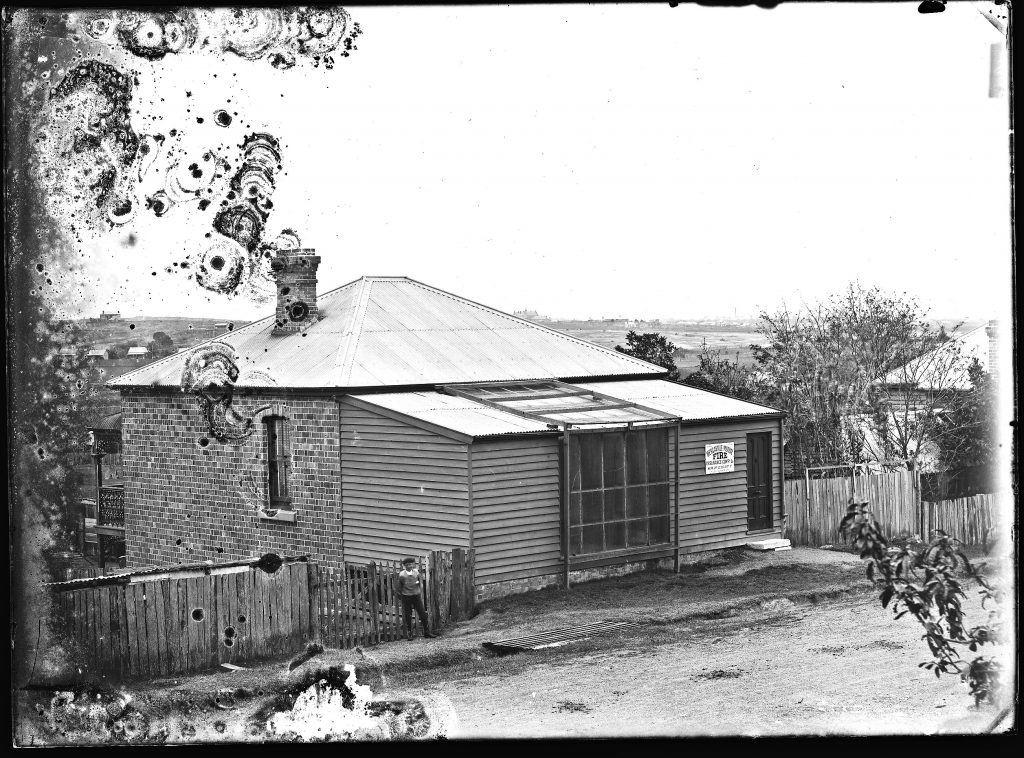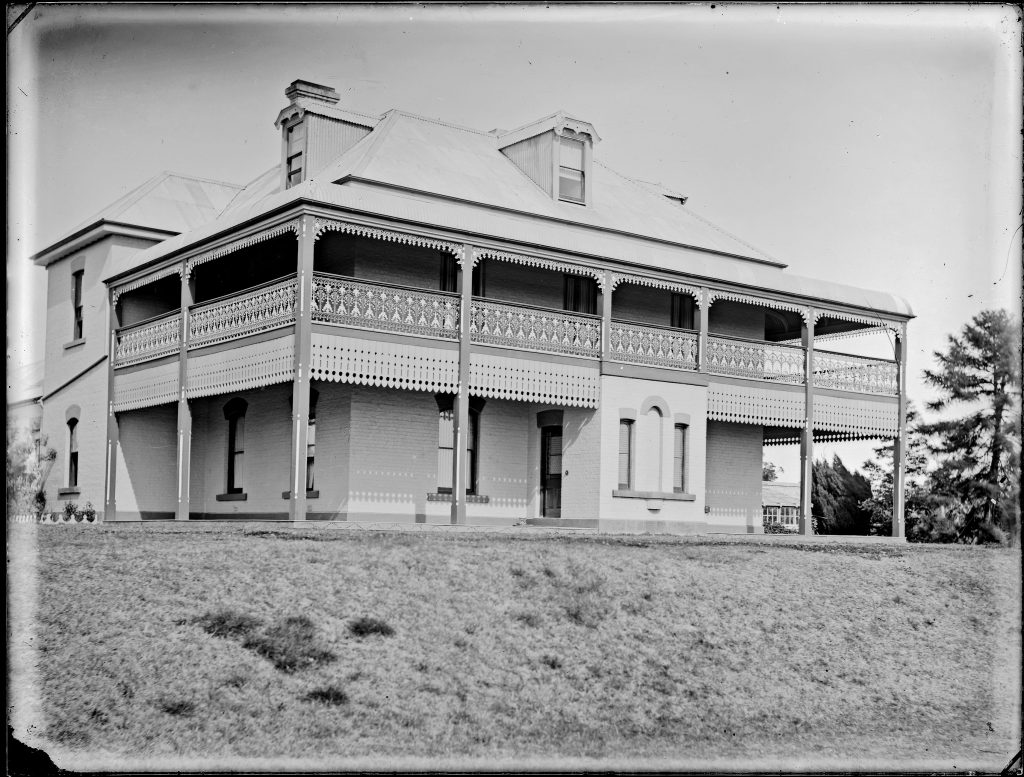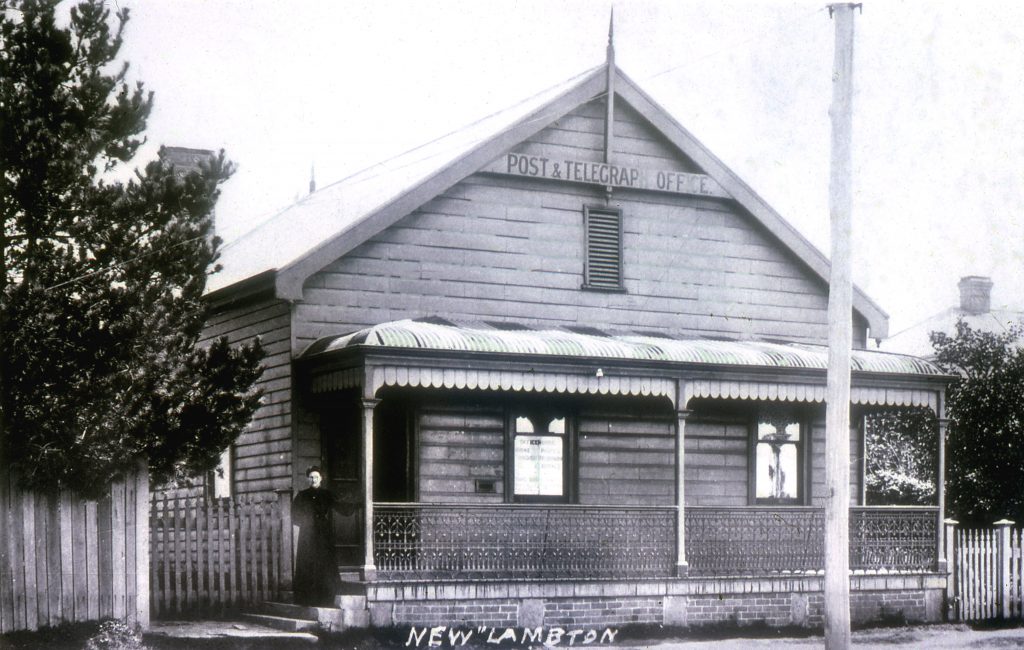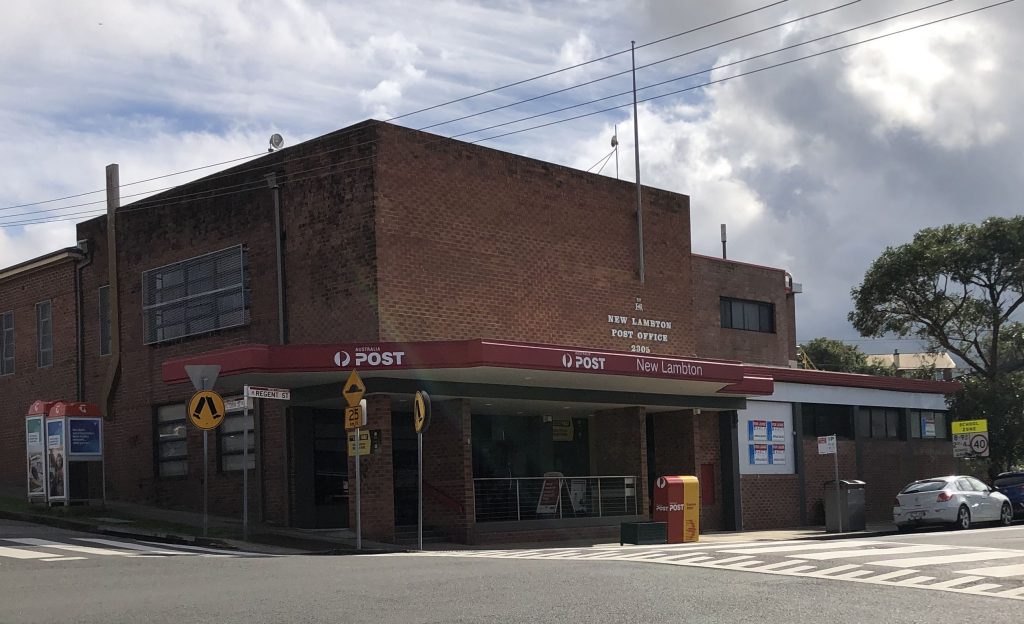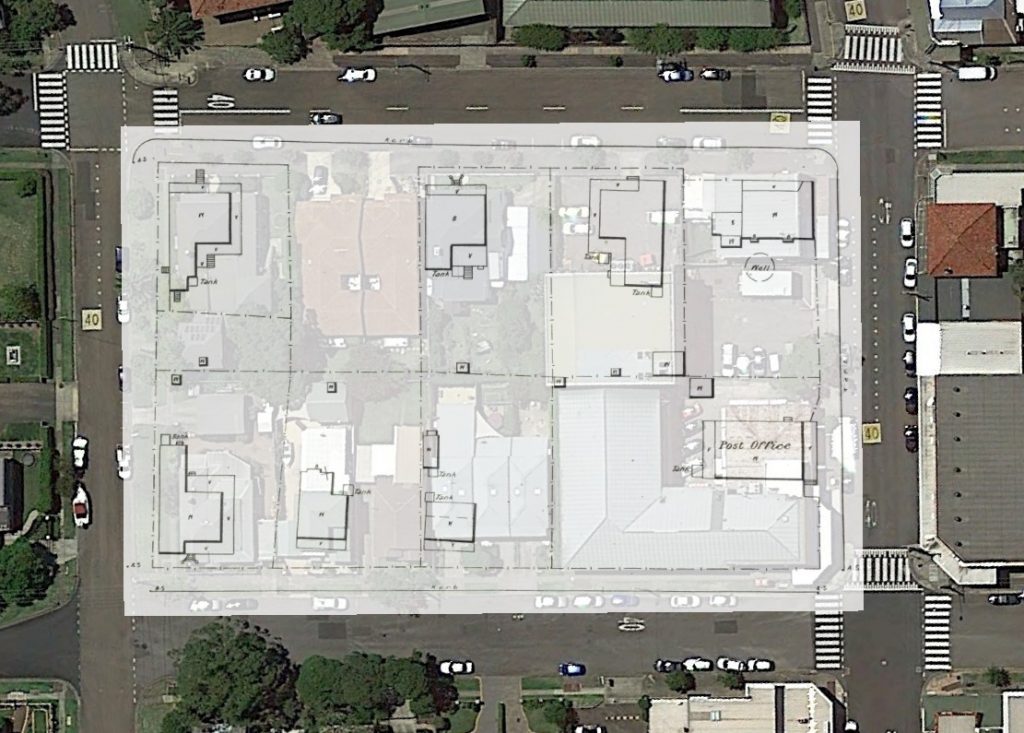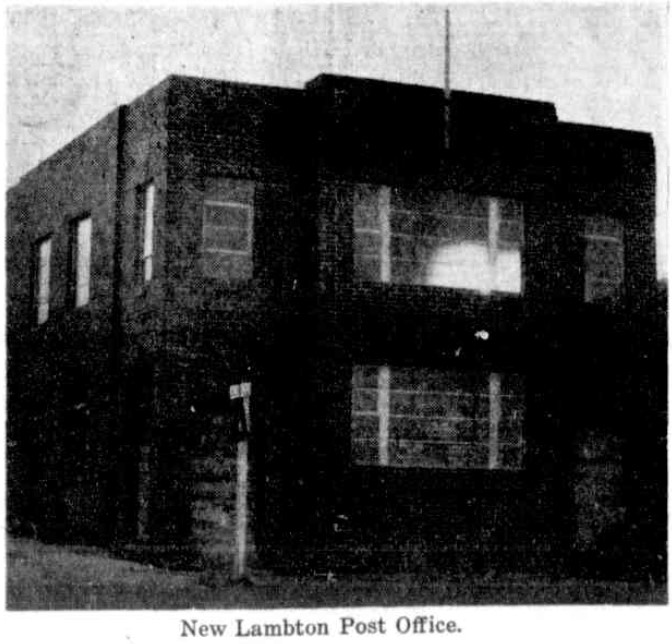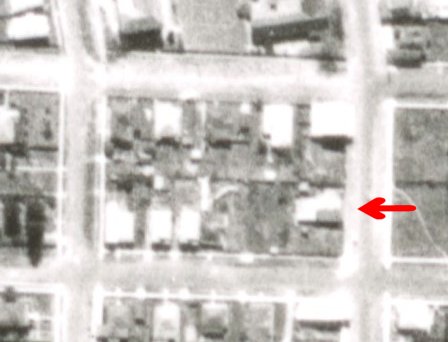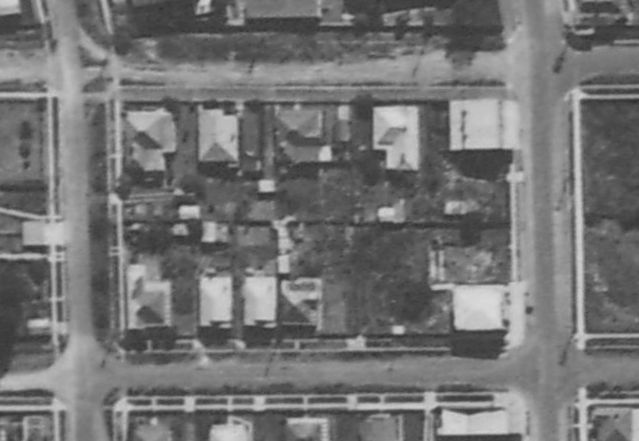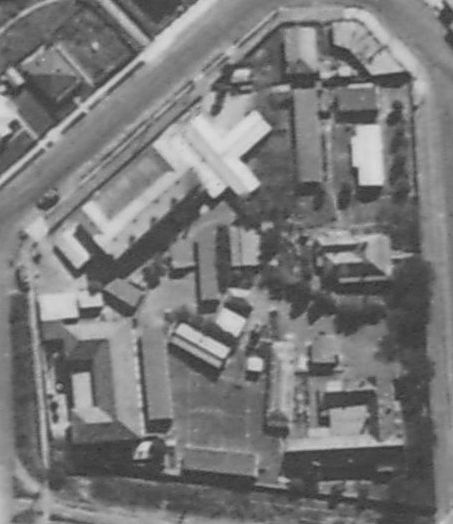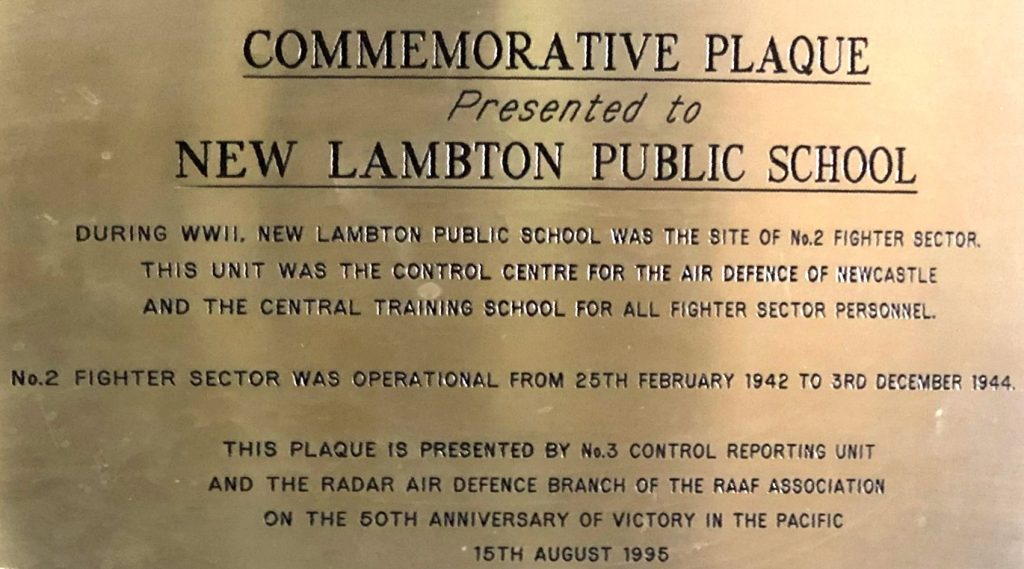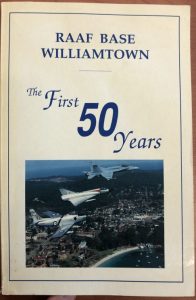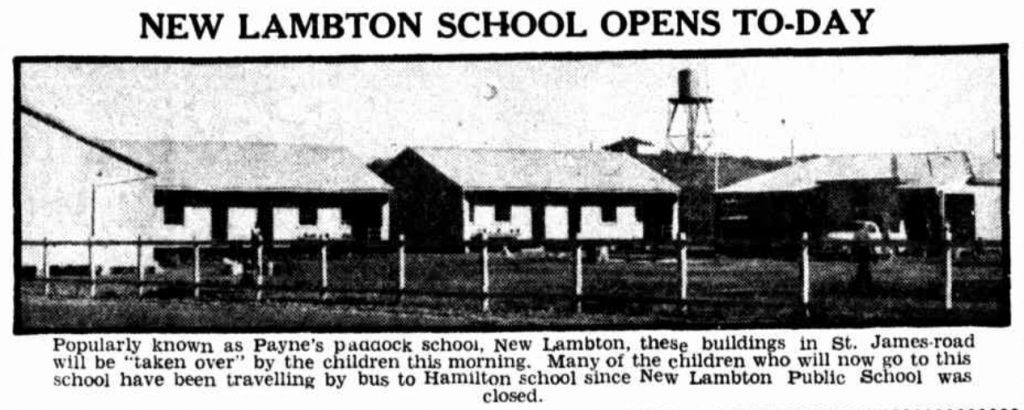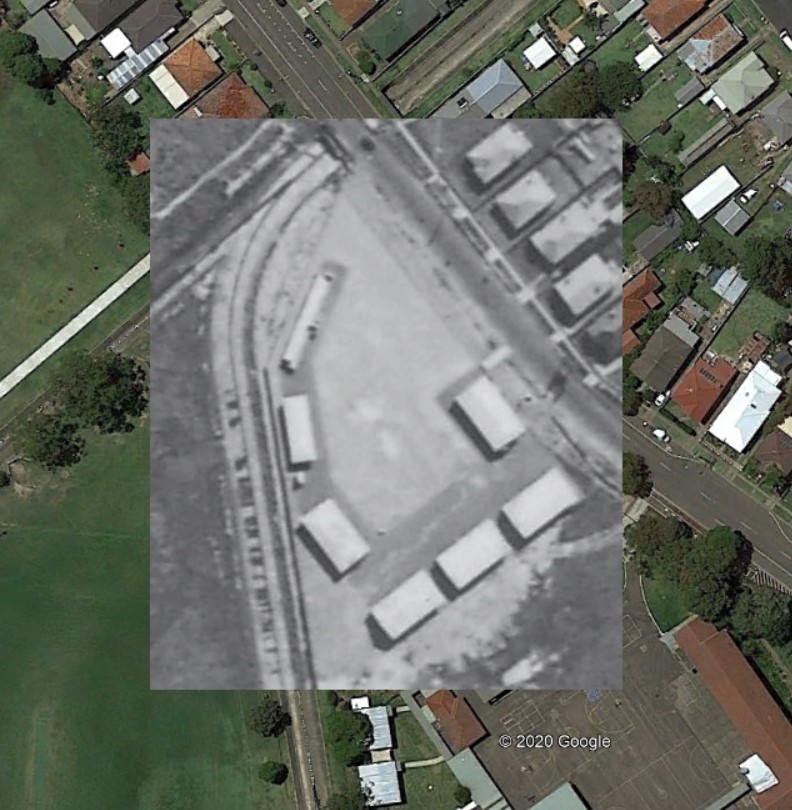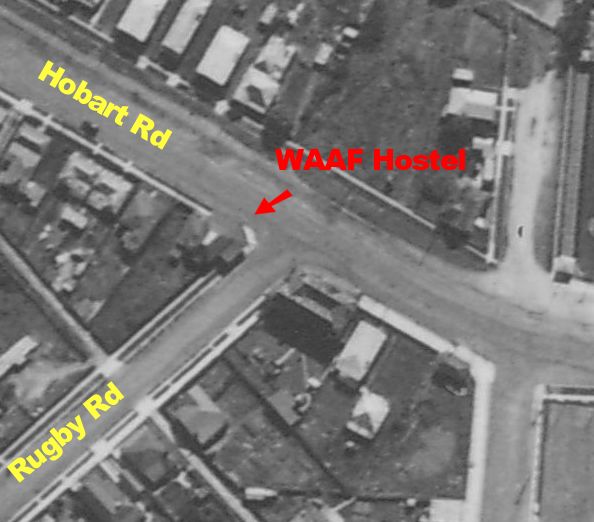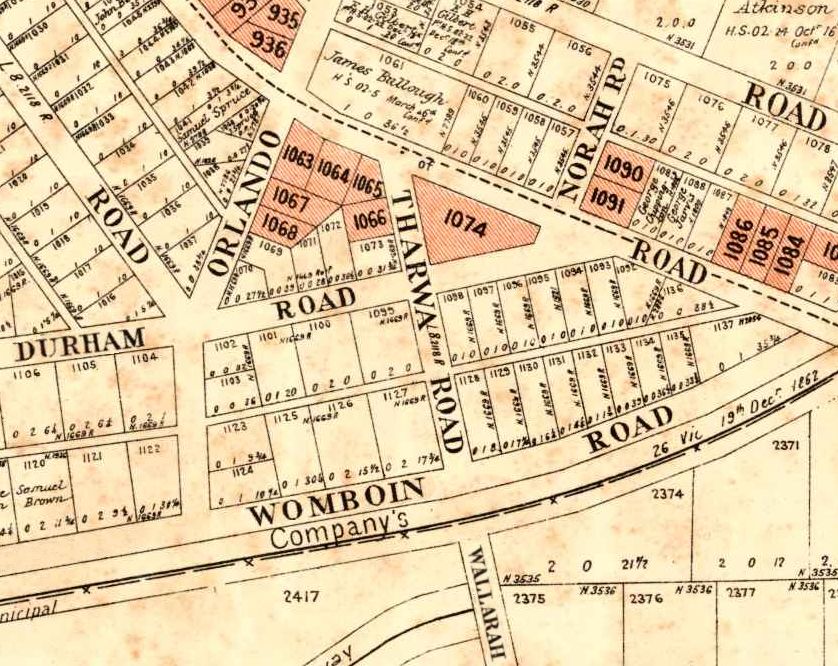This month’s photograph, taken at the border between Lambton and New Lambton looking along Howe Street invites the question “Why is a large group of well-dressed adults and children walking along the tram track towards Lambton?” The answer turns out to be related to transport, but not to trams.
When Lambton Colliery began in 1863 a railway was built to haul coal to the harbour. Roads into Newcastle were in a very poor state and a trip to town was a major undertaking. An appealing alternative was to travel by train. For a few years the colliery allowed passengers in the guards’ van of their coal trains at a cost of 6 shillings per trip. Tiring of this arrangement, they doubled the price in 1866, then ceased the service in 1867.
Residents agitated for the return of a passenger train service, and in 1874 the Waratah Coal Company gave permission for the Government to run a passenger train to Lambton on the railway to their new coal workings. This train operated on Saturdays and public holidays only, with pick-up and set-down at Betty Bunn’s crossing, located at the bottom end of Acacia Avenue where it meets Griffiths Road. The service ceased in 1887 when the tramline through Lambton began operation.
Afterwards the Lambton Colliery railway was occasionally used to convey passengers to special events. One example was the Lambton Public School annual picnic day on Wednesday 25 February 1903. At 9am a train of seven cars left Lambton colliery with 500 children and 400 adults on board and headed for Toronto. On arrival there were refreshments, sports competitions, musical entertainments, and Ralph Snowball was on hand to take group photographs.
At day’s end the picnickers returned by train to Lambton and disembarked near the bridge over the tram line. In the fading light of a summer’s evening as they headed for their homes, Snowball took a final photograph, capturing one of the last occasions a passenger train arrived at Lambton.
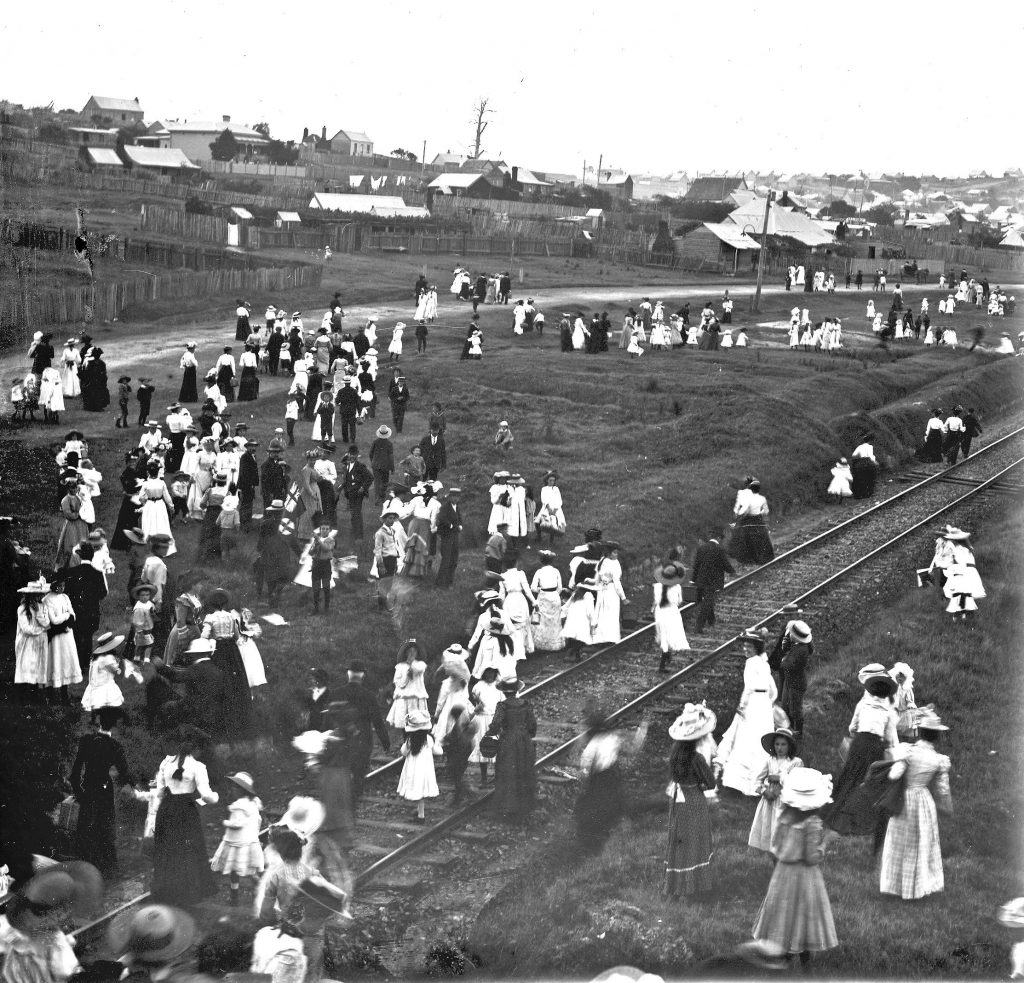
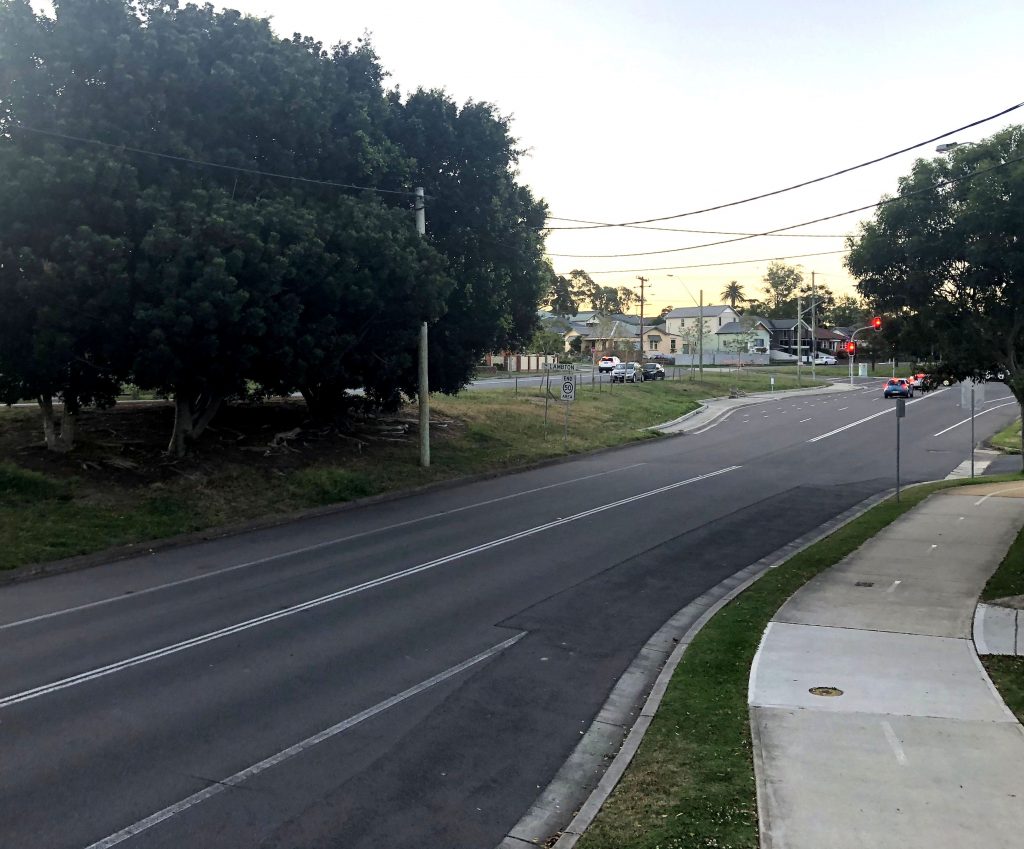
The article above was first published in the November 2020 edition of The Local.
Additional Information
Photo date
In the article published in The Local, I stated without qualification that the Snowball photo was taken on 25 February 1903 on the occasion of the Lambton Public School Picnic. It is important to note that the photo has no direct attribution to this date and event, but this conclusion is based on indirect evidence. Behind this story was an interesting case of how to locate and date a photograph.
When the University of Newcastle Special Collections first uploaded Snowball’s photo to their Flickr site, somehow it was mistakenly captioned “View from a train, Singleton”. In 2013 both John Shoebridge and Robert Watson identified that the scene was Lambton, and not Singleton. Robert in particular confirmed the location as being Lambton by comparing a number of houses on the top of the hill with another old photo of Lambton.

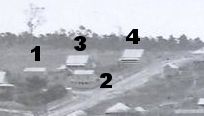
In determining the date of the photo, back in 2014 Robert noted that there was an electric light pole, which meant the photo was taken in or after 1890, when Lambton first installed electric lighting.
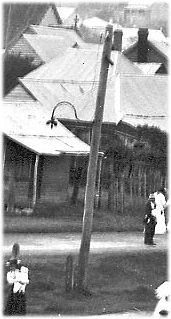
The tram line in the photo is only a single track, and as the duplication of this portion of the tram route was only opened in July 1911, this indicates that the photo is in the time range 1890 to 1911. Using this information, and noting a similarity with another photo of a dressed up crowd in Lambton Park, I made a guess back in 2014 that the photo might have been on the occasion of the celebrations to inaugurate the electric light scheme in September 1890. Not an unreasonable guess, but as it turns out, wrong.
The next step in unravelling the mystery came six years later, when Robert revisited the photo and made two key observations.
- The people in the photo are almost all women and children, with very few men.
- A couple of the children are waving flags.
I did a careful count of the people in the photo and found that adult women outnumbered the adult men, three to one. This would indicate that the event being captured took place on a weekday, when the majority of men would be at work. The large number of children would then suggest that this is a school event. This is supported by looking at one of the flags being held aloft, which appears to be the NSW State flag, suggesting that the event was connected with the Lambton Public School.

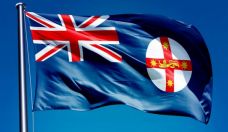
Prompted by Robert’s observations I then made a third key observation – that the crowd in the photo is not random or dispersing. With one lone exception there are no people in the side streets. Everyone is heading in the same direction. This would indicate that the people are moving as a group, having come from a particular point and heading towards a particular destination. This would be consistent with the idea that the group has just disembarked from a train on the colliery railway and are heading home to Lambton.
Given that the crowd is well dressed I made a guess that the event was connected with a picnic, and along with the three key observations already noted, I searched in Trove in the known date range for the keywords “Lambton train school picnic”, which immediately revealed a very likely candidate for the occasion – the Lambton Public School picnic on 25 February 1903.
One final and compelling confirmation of this dating, came from Newcastle Library’s Hunter Photo Bank collection. Knowing that the collection had quite a number of Ralph Snowball picnic photos, I searched the collection and found a photo that Ralph had taken at the school picnic at Toronto on that day. It is quite probable that Snowball travelled with the school group in the chartered train, and took a photograph of the disembarked passengers from the train carriage up on the embankment before the rail line traversed the bridges over Hobart Rd and Howe St.

There is one other documented occasion, on 23 November 1900, when Lambton Public School travelled by train to a picnic at Toronto. It may be that Snowball’s photo was from this earlier picnic, but given the Hunter Photo Bank picnic photo, I think it much more likely that it is of the February 1903 picnic.
The Waratah Company Rail LINE Passenger Service
Passenger train services to and from Lambton on the Waratah Coal Company’s railway commenced on Monday 25 May 1874, with a special train on the Queen’s birthday public holiday. Regular weekly Saturday evening services then commenced the following Saturday 30 May 1874. By March 1875, falling patronage meant that services were reduced to alternate Saturdays. The last passenger train on the line ran on Saturday 19 August 1887.
Passenger pick-up and set-down was at a location known as “Betty Bunn’s Crossing”, which was the point where the road between Lambton and Waratah crossed the coal company’s railway.
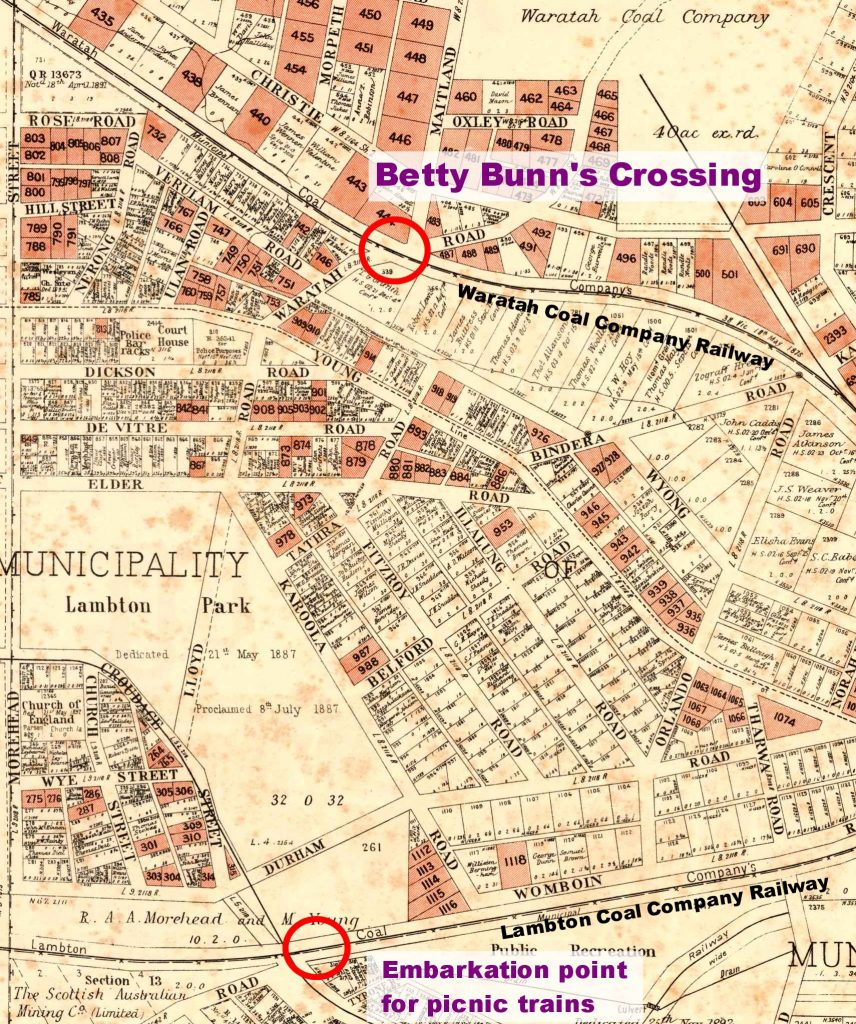
I have never seen an old map with Betty Bunn’s Crossing marked on it, but all the evidence of many newspaper articles points to it being the crossing of the Waratah coal rail line with the Lambton to Waratah road. Another reasonably clear indication of the location is the death notice for Thomas George Griffith who died “at Betty Bunn’s Crossing” in 1918. The 1906 map shows his property adjacent to the crossing.
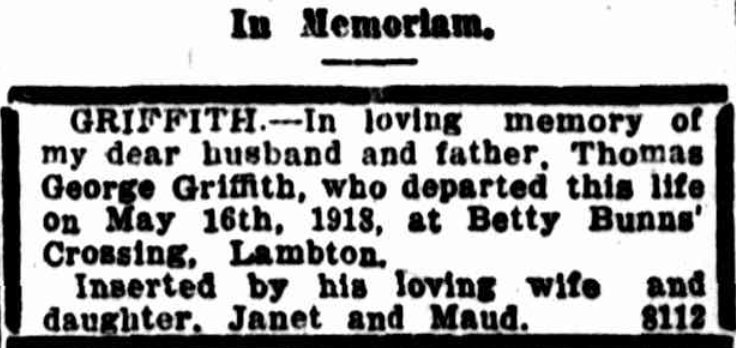

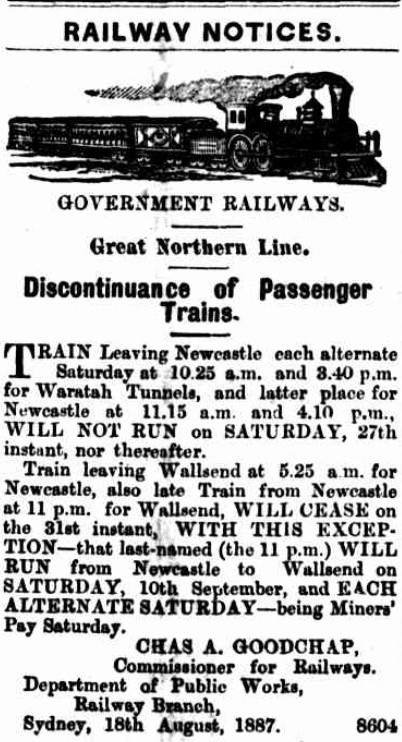
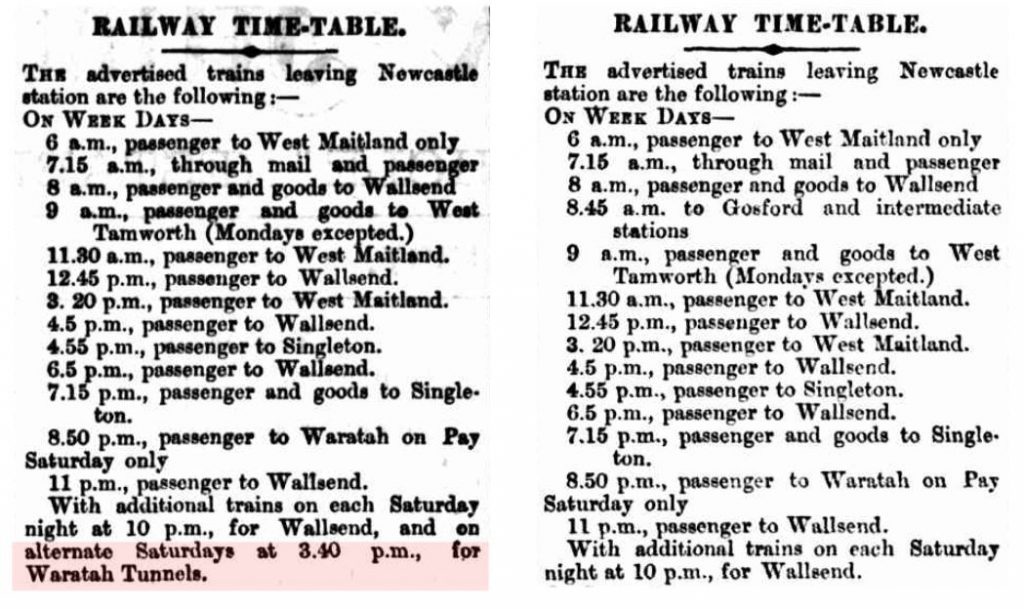
Newspaper articles
| Article Date Event Date | Notes |
|---|---|
| 12 Dec 1862 9 Dec 1862 | Passing of "Morehead and Young Railway Act" to enable the construction of the Lambton Colliery railway. |
| 25 Aug 1863 | By August 1863 the Lambton colliery railway was almost completed : "… the Waratah and Lambton Collieries, whose branch lines are already formed, only requiring some further slight addition being made to their permanent ways." |
| 6 Oct 1866 | "A meeting of miners was held at Pit Town, for the purpose of expressing the disapprobation of themselves and the inhabitants of Lambton and Pit Town generally, at the recent raising of the passenger's fares on the Lambton railway from 6d. to 11d. The meeting resolved that a deputation of four wait upon Mr. Croudace, the colliery manager, and ask him to represent to the Government the following requests, namely: 1. That the fares be lowered to 6d ; 2. That return tickets be issued on the railway ; 3. That a carriage in lieu of the present break van be substituted for passengers." |
| 3 Sep 1867 | "Within the past few days a memorial has been taken round the city, to which the names of a large number of the inhabitants have been attached, for presentation to the Minister for Works, with reference to having a regular passenger train to run between this city and the various coal mines, on a Saturday, for the convenience of the people residing in those localities who are desirous of visiting Newcastle." |
| 13 Nov 1869 | Call for a passenger train on the Lambton railway … "Why not, in order to give the enterprise a fair chance, have a thorough special train for Saturday afternoons, to leave Old Lambton (which would suit the requirements of the neighbourhood of Dark Creek and New Lambton, too) say, at, from four
to half-past four o'clock."
The letter writer also notes the bad state of the roads … "Lambtonians have to wend their way betimes up to their knees in mud through a nasty road, extending over a distance of from two to five miles, to reach the Government six o'clock train at Waratah, which is by no means a pleasant undertaking, particularly after a hard day's work, and which few, from mere choice, care about tackling, I can tell you. " |
| 9 Dec 1871 5 Sep 1871 | Public meeting “to establish a goods and passenger traffic on the Lambton Colliery railway.” |
| 16 Mar 1872 | In regard to "a petition from the inhabitants of Lambton, praying that a goods and passenger train may be run to Newcastle" the Commissoner of Railways writes that "by a special arrangement with Messrs. Morehead and Young, a passenger train used to run to Lambton, but in January, '67, they asked to be relieved ; this was consented to, and the traffic then ceased. I cannot, therefore, reintroduce the practice without, the consent of Messrs. Morehead and Young." |
| 19 Aug 1873 16 Aug 1873 | It appears that there are occasional passenger services on the Lambton line on pay Saturday's … "This being pay-night, the principal street in the city was more thronged than we have seen it for a considerable time past. The various trains from Wallsend and Lambton brought in a large number of passengers, and these added much to fill our main street." |
| 7 Feb 1874 | "Here is the case of the people living at Lambton and New Lambton ; and so far as railway communication is concerned, they are completely isolated, although when the pits are at work they have from four to five trains per day running to each of the collieries; but being private ones, and the proprietors refusing to allow passenger traffic on them." |
| 21 Feb 1874 28 Feb 1874 | A one-off experiment of a passenger service to be tried. "The committee appointed to agitate for a train to run between Newcastle and Lambton have at last succeeded, after great exertions and through strenuous efforts … A special passenger train will run from Newcastle to Old Lambton Crossing on Saturday night, the 28th February, 1874. The train will leave Lambton for Newcastle on or about 5 o'clock p.m., and returning from Newcastle to Lambton on or about 11 p.m. The fares will be 9d. for the return ticket and sixpence for the single fare." |
| 6 Mar 1874 28 Feb 1874 | "A Saturday night train commenced to run from Lambton to Newcastle on the 28th ultimo, and over 500 return tickets were taken, besides single ones; the brass band accompanied the excursionists, amounting in number to about 900. " |
| 7 Mar 1874 28 Feb 1874 | "Saturday last was a new era in Lambtonian history. The passenger train, as announced, arrived here about 4 p.m. with fourteen carriages and the van, and long before the appointed time for starting almost every available seat was occupied. We have heard that there were more than 500 tickets sold. If this train is to be permanent, as we hope it will, there will have to be some other arrangement for giving out the tickets, for it will never do for people to have to climb up into the guard's van, as was the case on Saturday."
"This train is a fine thing for the business people in Newcastle, but quite the reverse for our town's business folk, who are considerably down in the mouth about so much ready money going out of their hands … the next step ought to be to agitate for a goods train to be run here." |
| 14 Mar 1874 12 Mar 1874 | Newcastle Chronicle's report of a public meeting to discuss getting a passenger train service to Lambton. An allegation is made that business people agitated against aregular train service as it would hurt their trade.
Mr W Goodhew “observed that the Lambton line was a good and convenient one no doubt, but when they were allowed the use of it on one night, and deprived of it the next what dependence could be placed on it. He moved that application be made to the directors of the Waratah Coal Company for permission to run the train on their line of railway to the new tunnel, to Betty Bunn's crossing.” |
| 14 Mar 1874 12 Mar 1874 | The Newcastle Morning Herald's report of the public meeting regarding a passenger train service to Lambton. The report notes that "Mr. Croudace, the Manager, has granted permission for a passenger train to be run from here to Newcastle on the demonstration day and also for a Saturday night's train for four Saturdays ; and if it proves payable, the train will run regularly." Despite this promising sign, a regular train service on the Lambton line never eventuated. |
| 18 Mar 1874 | "Great disappointment was felt at the non-arrival of the passenger train last Saturday evening. There were about 200 or 300 passengers waiting, who had to return to their homes annoyed. The blame is attributed to Mr. Croudace, for, I believe if he would consent to the train's running, the Government would; and, the advantage the inhabitants would derive would be very great." |
| 31 Mar 1874 | "The subcommittee appointed to conduct the application to the Waratah Coal Company, for a passenger train to be laid on, have received a reply from the directors, expressing their willingness to grant the request … The sub-committee accordingly waited upon Mr. Higgs, the traffic manager, to gain the required Government permission, and that gentleman has informed them that there were some arrangements pending respecting a train to be laid on by the Lambton Company, which had not yet been decided upon." |
| 4 Apr 1874 | "A meeting of parties interested in the Lambton train movement was held at the Lambton crossing, Mr. T. Hardy in the chair, when it was determined to send a deputation to the Minister for Works, to impress upon him the necessity of running a passenger train to this town at once." |
| 23 May 1874 | "I have been instructed to inform you that the directors of the Waratah Coal Company have no objection to the Government running, for the convenience of the inhabitants of the district, on Saturday nights and holidays passenger trains on the Waratah Coal Company's private line of railway,
from the junction with Great Northern Railway to the Company's new tunnel, at the same rate as it is
done on the Wallsend Coal Company's line, provided arrangements are made so as not to interfere with the Waratah Company's coal traffic, and that the Government construct at its own cost all sidings,
platforms, landing places, &c., which may be required for passenger traffic."
The following Monday, being a public holiday for Queen Victoria's birthday, "arrangements were made for the train to leave Bunn's crossing on Monday, 25th May at half-past 10 o'clock a.m." |
| 27 May 1874 25 May 1874 | First passenger train on the Waratah Company railway. "The Railway Auditors laid on a train from Bunn's Crossing, on the Waratah Company's line, on Queen's Birthday, which was moderately patronised." In the same week that passenger trains start running to Lambton on the Waratah Company line, promises are being made to run passenger trains on the Lambton colliery line … "The following arrangement was made, between Mr. Croudace, on behalf of the Lambton Company, and the Minister, viz., that [Government] trains should be run ... that the Company give their line free and keep it clear of their own traffic ... The Government to take all other responsibility … this arrangement to come in force immediately after the holidays." In spite of this arrangement being made, nothing came of it. |
| 30 May 1874 | "Although the Minister for Works promised that a passenger train should be run to this town on the first Saturday after the holidays, no communication whatever has been received by the Traffic Manager on the subject. The arrangement made between the Minister for Works and Mr. Croudace was that four trains should be run, commencing on the first Saturday after Queen's Birthday." |
| 2 Jun 1874 30 May 1874 | "On Saturday, the first evening train for passengers ran from the Waratah Co.'s Tunnels to Newcastle, for the accommodation of a large population in that neighbourhood. The number of passengers by whom it was availed of, amply testified the necessity for the convenience. We take it for granted that the train will be continued, as otherwise the people of Grovestown and Lambton would have to give up all idea of getting into Newcastle during the winter evenings, either by way of the Broad Meadow or Waratah, the former being a sheet of water, and the latter a perfect slough of mud." |
| 18 Jun 1874 | "Nothing further has transpired here with reference to the granting of a passenger train [on the Lambton line], and many are now of opinion that it will not be allowed, as the one from the Waratah Tunnels is so central." |
| 4 Aug 1874 1 Aug 1874 | Fatal accident on the Waratah Company railway, when the Saturday evening passenger train strikes Andrew Tunney, who while drunk was riding his horse along the railway. |
| 11 Aug 1874 | After the death of Andrew Tunney on the railway line, the passenger service to Lambton is halted. A conspiracy theory arises that storekeepers on the inquest jury had a vested interest in stopping the passenger service in order to keep business in the town. |
| 17 Mar 1875 | "I believe that it is also intended to make another effort towards getting a passenger train on the Lambton line, and with some chance of success. Mr. Croudace has been heard to express his willingness to allow it, and no doubt the Government will have seen by this time the fallacy of running the train to the Waratah New Tunnels. As a proof that they have seen their mistake the train is now only run on alternate Saturdays, and then with very few passengers, the majority of the people preferring to walk to Waratah station or down the line to Hamilton rather than go to the new tunnels, which is very little nearer." |
| 22 Sep 1875 18 Sep 1875 | A public meeting to petition the Governemnt "asking them to construct a branch line of railway from the Great Northern, through Lambton, and thence to Wallsend."
"It was one of the anomalies of the coal-mining district of Newcastle that a line of railway came into the centre of each township, and yet the residents could not travel on these lines at all, or they did so as a favour, granted by the coal companies, which they could withdraw at any time." The movement pushing for this railway never gained momentum. Instead, in the next decade the push was for a tram line rather than a train line to Wallsend. |
| 28 Apr 1876 | The possibility of running a special passenger train on Lambton line to take patrons to see a performance of “Little Nell” at the Victoria Theatre is discussed. "I am sure that Mr. Croudace would allow a train to run on his railway for this purpose. He has obliged Mr. Bennett in this way before and would do so again." |
| 4 Jan 1877 1 Jan 1877 | A rather tongue-in-cheek one sentence report of a minor incident on the Waratah Tunnels line … "The gates on the Waratah Railway were closed when the Passenger train was coming up from Newcastle on New Year's night, but the engine opened them without a key." |
| 27 Feb 1877 | "The alteration in time of the Pay-Saturdays' passenger train to the Waratah Company's Tunnel, from 2 o'clock p.m. to 11 o'clock a m., does not meet with the approbation of the public. The housewives especially are dissatisfied with the alteration, as 11 o'clock is too soon for them to leave home, having their domestic duties to attend to." |
| 6 Apr 1880 3 Apr 1880 | "On Saturday evening Gordon's 'bus was capsized near Bunn's crossing, when coming from the 10 o'clock train. " |
| 29 Jun 1883 | "At the last Municipal Council meeting Alderman Thornton very properly drew attention to the want of accommodation, in the shape of a platform, at the Waratah Company's tunnel, for the use of passengers travelling from there to Newcastle on pay Saturdays." |
| 2 May 1885 | Grievance from a Lambton miner's wife regarding the general uncleanliness of the Waratah tunnel train. |
| 19 Aug 1887 13 Aug 1887 | Last passenger train on the Waratah Tunnels railway. An advertisement on the following Friday announces the discontinuance of the service. |
| 23 Nov 1900 21 Nov 1900 | Lambton Public School picnic to Toronto. "About 9 a.m. upwards of 600 children, all nicely dressed in holiday attire, with their flags and banners, presented themselves at the school grounds, and formed a spectacle well worth witnessing. A procession was then formed, and the little ones marched along Elder-street and through the park to the Lambton Colliery railway, where, thanks to the kindness of Mr. T. Croudace in granting the use of the line, a train of seven cars awaited them." |
| 5 Feb 1903 | Planning meeting for the Lambton Public School picnic. "It was decided to hold the picnic at Toronto, entraining the children at the Lambton Colliery railway, as in the previous year, if Mr. Croudace and
Mr. Kitching will permit the train to run on the colliery line."
(The reference to a picnic train "in the previous year" is a little puzzling, as I can find no record of that event. It may be that it is a time-inaccurate reference to the picnic in November 1900, two years previously.) |
| 21 Feb 1903 | "The annual picnic of the Lambton Public School will be held on Wednesday, the 25th instant. The train will leave Lambton Colliery at 9 a.m., calling at all stations on the way to Toronto. There has been an energetic committee at work for some months, preparing for the event, and it is hoped that the parents will show their appreciation of the good work done by attending in large numbers on that day." |
| 27 Feb 1903 25 Feb 1903 | "The annual picnic of the local Public School, took place at Toronto on Wednesday, and was largely attended by the parents and the general public. A train of seven cars left the Lambton Colliery railway at 9 a.m., containing about 500 children and 400 adults … The return journey was made in time to allow the little ones to get home before dark." |


